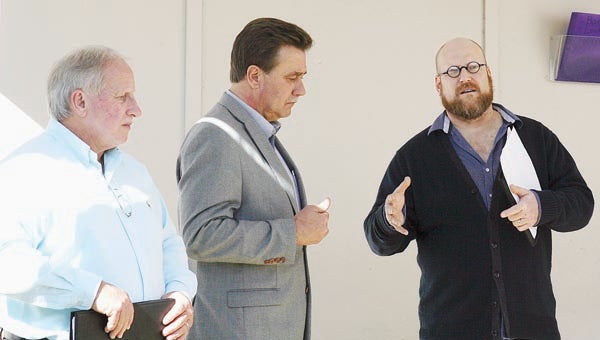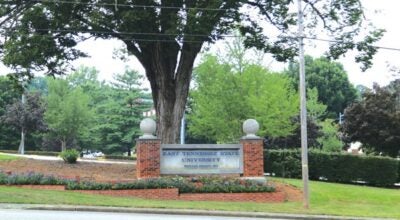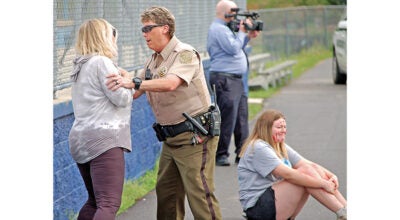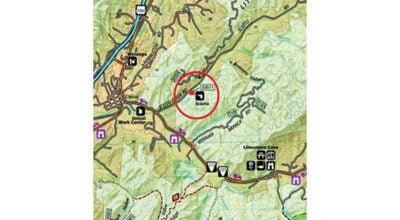Facilities committee tours county schools to see needs first hand
Published 8:04 am Wednesday, April 1, 2015

Star Photo/Abby Morris-Frye
Carter County School Board Chairman Rusty Barnett, Director of Schools Kevin Ward and County Commissioner Mike Hill talk outside one of the portable classrooms at Happy Valley Elementary School.
On Tuesday, some local elected officials went back to school, or rather five schools.
Members of the Carter County school system’s Facilities and Capital Improvements Committee toured Central, Keenburg and Happy Valley Elementary schools, Happy Valley Middle School and Happy Valley High School. The outing was the first in a series of trips when members of the committee will visit each of the system’s 14 schools to see firsthand the condition of the facilities and what needs the schools have from a building and space standpoint.
The facilities committee comprises members of the Carter County Board of Education, members of the Carter County Commission and school system officials. On Tuesday, members Rusty Barnett, Tony Garland, Mike Hill, John Lewis, Director of Schools Kevin Ward and Maintenance Supervisor Phillip Nave were present for the school tours.
At each school, the committee members were met by school leaders who conducted the tour and discussed the facility needs of each particular school.
The string of tours began Tuesday morning at Central. From there, the group headed to Happy Valley, where they visited first the elementary, then the middle school and finally the high school. The day concluded after the group visited Keenburg.
One of the major topics of the day was the school system’s previous use of modular units as a cheaper way to create additional classrooms without building onto the school.
Currently, 46 modular units house a total of 58 classrooms across the county school system, Nave said.
The modular units may present a less expensive way to create more classrooms, but Nave said the school system pays significantly more in maintenance and utilities for the modular units than it would for a traditional classroom. The units are much less energy-efficient than a brick-and-mortar classroom, and they need repairs a lot more frequently, he said.
While visiting Happy Valley Elementary and seeing the modular units at that school, Hill asked how much money the county spent each year trying to maintain the units.
“Maintenance costs, in my experience, are double in a modular than what it is in a regular classroom,” Nave said in reply, adding the cost of heating a modular classroom is about 30 percent higher than a traditional classroom. As far as an actual dollar amount, Nave said he did not have that information calculated.
While the modular units have a life span of about 10 years, Kevin Ward said the majority of those in use by the school system have been in use for much longer; some have been in place at county schools since the mid-1970s. During that time frame, the units have had roof replacements several times and numerous floor replacements, Nave said.
In addition to increased maintenance and utility costs, the units also come with safety concerns.
“Any time we have bad winds or storms, they have to evacuate these and take the children into the main school,” Barnett said of the modular units.
Making progress in eliminating the modular units from use will require showing the public how much the modular units are actually costing the county through the increased need for maintenance and low energy efficiency, Hill said.
“I think the idea is just convincing people what a bad idea this is,” he said.
Any plan to eliminate the modular units would have to be long term, Kevin Ward said, adding eliminating the modulars would require permanent construction to create the space to replace the modular units.
At the end of the day, Ward said he was pleased with the first run of tours.
“I thought we had a real productive day,” he said, adding he was glad the committee got to see first hand the space needs at the schools, especially at Central and Keenburg.
The next round of school tours is set for April 18, when the committee will visit the Stoney Creek community and tour Unaka High School and Unaka and Hunter elementary schools. The group will end the day with a tour at Valley Forge Elementary.





